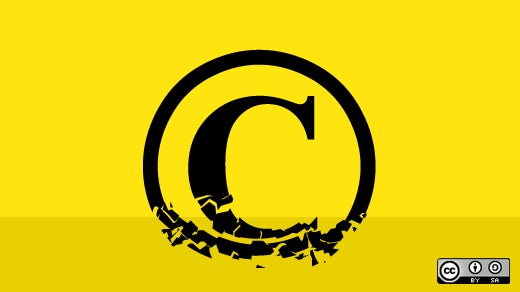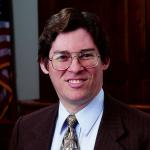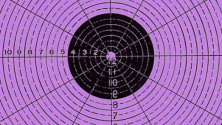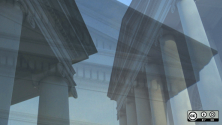In a decision that favored the 1% (copyright owners) over the 99% (consumers and the public domain), the U.S. Supreme Court recently held that neither the Patent and Copyright Clause of the U.S. Constitution nor the First Amendment prohibits the removal of works from the public domain. Golan v. Holder, No. 10-545. Prior blog coverage of the case: certiorari granted and the 10th Circuit opinion.
The majority opinion was written by Justice Ginsburg for herself and five other justices. Justice Breyer, joined by Justice Alito, dissented. (Justice Kagan recused herself, as she had participated in the case as Solicitor General before being named to the Court.) The line-up of justices was therefore essentially the same as the 7-2 opinion in Eldred v. Ashcroft, 537 U.S. 186 (2003), which upheld the Constitutionality of copyright term extension, with Justice Alito replacing Justice Stevens in dissent, and Chief Justice Roberts and Justice Sotomayor replacing Chief Justice Rehnquist and Justice O’Connor, respectively, in the majority.
The case concerned Section 514 of the Uruguay Round Agreements Act of 1994 (URAA), which is codified in 17 U.S.C. § 104A. That section “restored” copyright protection to works of foreign origin that were still under copyright protection in their source countries, but were in the public domain in the U.S. for one of three reasons: (1) lack of national eligibility, for countries with whom we did not have copyright relations prior to joining the Berne Convention; (2) lack of subject-matter eligibility, for sound recordings fixed before February 15, 1972 (the date sound recordings first became eligible for federal protection); and (3) failure to comply with the formalities previously required under U.S. (such as proper copyright notice and registration of the renewal term). Effective January 1, 1996, all such works were taken out of the public domain and placed under copyright protection in the U.S., for the same duration that is granted to domestic works. (For the background of the case, see Tyler T. Ochoa, Is the Public Domain Irrevocable? An Introduction to Golan v. Holder, 64 Vanderbilt L. Rev. En Banc 123 (2011)).
The Petitioners (orchestra conductors and film distributors who had performed and sold foreign works in the public domain before restoration) made three principal arguments, all of which the majority rejected. First, Petitioners argued that the phrase “for limited Times” in the Patent and Clause prohibits Congress from removing works from the public domain once those “limited Times” have expired. Justice Ginsburg, however, relying on her majority opinion in Eldred, held that “limited” does not mean “fixed” or “unalterable,” and noted that terms granted to foreign works are the same as those granted to domestic works, which the court had previously held in Eldred to be “limited.” Slip. op. at 13-14. She also relied on the fact that many of the works whose copyright was “restored” had never enjoyed copyright protection in the U.S. at all, saying “surely a ‘limited time’ of exclusivity must begin before it may end.” Slip. op. at 15. (Here, Justice Ginsburg is not quite correct: all works enjoyed common-law copyright protection before they were published, even those foreign works originating in countries with whom the U.S. had no copyright treaty relations. It was only upon first publication that foreign works entered the public domain in the U.S. if they failed to comply with formalities or were not from an eligible country. But it is true that many of the works involved had not previously received federal statutory copyright protection.) Nonetheless, the majority’s rationale does not apply to those foreign works that did receive 28 years of copyright protection and were not renewed. Not only did the Berne Convention NOT require that such works be removed from the public domain, Article 18(2) of Berne commands that such works “shall NOT be protected anew” (emphasis added). See Daniel Gervais, Golan v. Holder: A Look at the Constraints Imposed by the Berne Convention, 64 Vanderbilt L. Rev. En Banc 147, 149-54 (2011).
Justice Ginsburg relied primarily on the fact that “the Copyright Act of 1790 granted protection to many works previously in the public domain. . . . The First Congress, it thus appears, did not view the public domain as inviolate.” Slip. op. at 16. However, as Tomas Gomez-Arostegui and I pointed out in our amicus brief, the historical evidence on this point is highly equivocal and far from compelling. We cannot say with certainty whether the members of the First Congress thought they were removing works from the public domain or not; but there is a strong argument that they did NOT think so. It is true that in 1834 the Supreme Court held that there was no post-publication common-law copyright, meaning that, to the extent that the First Congress had protected previously published works, that law was later held to have had the effect of removing works from the public domain; but it is far from clear that the members of the First Congress would have foreseen or agreed with that conclusion.
Justice Ginsburg also relied on a handful of private patent and copyright laws that removed specific works from the public domain, and on two acts that gave owners of foreign works who were unable to comply with U.S. formalities during World Wars I and II the opportunity to comply with those formalities after the war, thereby removing works from the public domain. In so doing, however, Justice Ginsburg indulged in the blithe assumption that anything Congress has done a handful of times must be Constitutional. Marshaled against her conclusion is that is the fact that Congress has steadfastly avoided protecting works already in the public domain each time it has passed a general revision of the Copyright Act, and even expressed the opinion in the legislative history of the 1976 Act that doing so would be unconstitutional. (See Breyer’s dissenting opinion, slip. op. at 19.)
The Petitioner’s second major argument was that granting copyrights to existing works does not “promote the Progress of Science,” as the Copyright Clause requires. In the 18th Century, “Science” meant knowledge broadly, and this portion of the Clause is traditionally read to incorporate a “utilitarian” view of copyright; namely, that the purpose of copyright is promote the creation and distribution of new works of authorship. (This is the principal basis of Justice Breyer’s dissenting opinion.) The majority, however, held that the Clause is also intended to promote the dissemination of existing works of authorship. While there is plenty of evidence to support this assertion (see, e.g., Malla Pollack, What Is Congress Supposed to Promote? Defining ‘Progress’ in Article I, Section 8, Clause 8 of the U.S. Constitution, or Introducing the Progress Clause, 80 Neb. L. Rev. 754 (2002)), it is the majority’s application of this principle that is problematic. Basic economic theory holds that an existing work will be more widely disseminated when it is in the public domain than it will be under copyright protection. Copyright exists to solve the “public goods” problem of financing the work’s creation and initial publication (who would invest in the creation and distribution when the work could be copied more cheaply without paying the author?); but after a “limited Time,” dissemination is better served by placing the work in the public domain. The majority, however, refuses to question Congress’ assertion to the contrary, applying only rational basis review, instead of any kind of heightened scrutiny. (Slip. op. at 21-22).
Petitioner’s third argument was the First Amendment requires heightened scrutiny, because leaving works in the public domain was one of the “traditional contours of copyright protection” that the majority alluded to in Eldred that would justify First Amendment scrutiny. The majority rejects this argument, and squarely holds that the “traditional contours of copyright protection” are limited to the idea-expression dichotomy and the fair use doctrine. (Slip. op. at 23-26 & n.29.) So long as those two (vague and inconsistently applied) limits on copyright are preserved, apparently Congress had the power to impose any other type of speech restriction in the name of copyright protection.
The majority’s decision would seem to foreclose almost any future Constitutional challenge to Congress’ patent and copyright power. The majority rejected (or reinterpreted) the dictum in Graham v. John Deere Co., 363 U.S. 1, 6 (1966), in which the Supreme Court stated that “Congress may not authorize the issuance of patents whose effects are to remove existent knowledge from the public domain, or to restrict free access to materials already available,” saying that this is NOT a Constitutional limit on Congress’ power. (Slip. op. at 19) The majority also states that that the public has no vested rights in the public domain at all. Instead, it characterizes the public domain as the absence of ownership, rather than affirmative ownership by the public. (This characterization is at odds with 19th Century opinions on the subject. In my article Origins and Meanings of the Public Domain, 28 U. Dayton L. Rev. 215, 232-36, 256-66 (2003), I collect the evidence that the public domain was consistently said to have two characteristics in the 19th Century: it was property that was owned by the public, and it was irrevocable.) The absence of any ownership interest in the public domain would seem to foreclose any challenge based on the Fifth Amendment’s Due Process Clause as well.
The Golan opinion is a severe blow for those who believe that the public domain is a vital resource for public education and creativity. I anticipate that owners of copyright in domestic works will now lobby Congress for the same advantage that foreign copyright owners received in 1996: restoration of copyright for those works that are in the public domain for failure to comply with formalities such as copyright notice and renewal. This move, if successful, would have an enormous impact on the public domain. It has been estimated that only about 85 percent of works published in 1923-1963 were renewed; the remaining 85 percent are in the public domain. Congress could apparently restore the copyrights in this 85 percent at any time, leaving the U.S. public domain with only those works that were created before 1922.
Would Congress go back and attempt to restore copyrights in even older works, those that did enjoy the maximum period of copyright protection? I agree that it is far-fetched to suppose that Congress will take advantage of its newly-ratified power to do so, although a broad reading of the opinion would certainly support its power to remove any works from the public domain, including Shakespeare and Beethoven. (Indeed, under the majority’s rationale, none of their works ever enjoyed copyright protection in the United States.) However, at least one passage in the opinion suggests that even this Supreme Court might balk at such a move:
Carried to its logical conclusion, petitioners persist, the Government’s position would allow Congress to institute a second “limited” term after the first expires, a third after that, and so on. Thus, as long as Congress legislated in installments, perpetual copyright terms would be achievable. As in Eldred, the hypothetical legislative misbehavior petitioners posit is far afield from the case before us. In aligning the United States with other nations bound by the Berne Convention, and thereby according equitable treatment to once disfavored foreign authors, Congress can hardly be charged with a design to move stealthily toward a regime of perpetual copyrights.
(Slip. op. at 15) This paragraph suggests that, should Congress attempt to “restore” copyright protection to a work after its maximum statutory period of duration had expired (rather than a work which failed to achieve the maximum period for failure to comply with formalities), the Court might be willing to hold that such “misbehavior” does violate the “limited Times” provision.
This article originally appeared on Eric Goldman's Technology & Marketing Law Blog and is re-posted with permission.







Comments are closed.